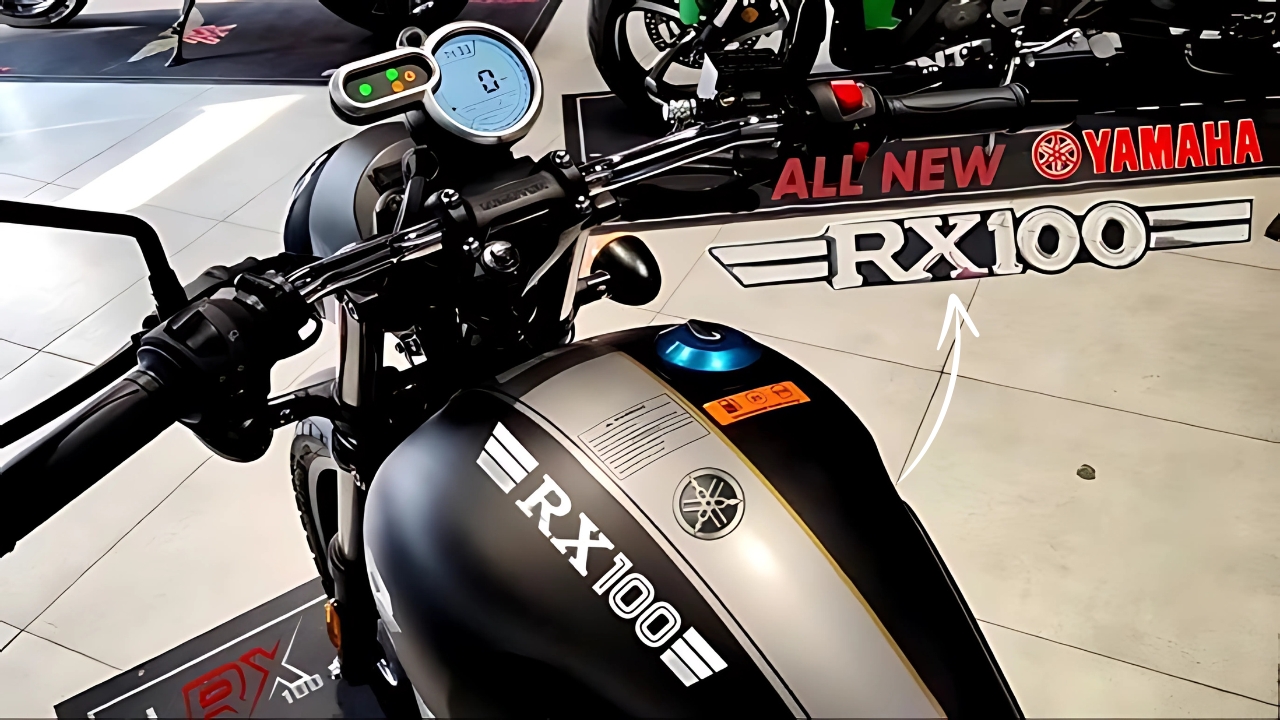In the annals of Indian automotive history, few motorcycles have left as indelible a mark as the Yamaha RX 100.
This iconic two-wheeler, first introduced in 1985, captivated the hearts and minds of an entire generation, cementing its place as a true legend in the world of motorcycling.
The Birth of an Icon
The Yamaha RX 100 was born out of a time when the Indian two-wheeler market was dominated by utilitarian commuter bikes.
Yamaha, the Japanese manufacturer known for its prowess in the world of motorsports, saw an opportunity to introduce a motorcycle that would cater to the growing demand for performance and excitement.
With its sleek, aerodynamic design and a powerful 99cc, two-stroke engine, the RX 100 immediately stood out from the crowd.
The bike’s distinctive fuel tank, high-mounted exhaust, and sporty riding position gave it a sense of purpose and aggression that was unmatched by its contemporaries.
A Thrill-Seeker’s Dream
The Yamaha RX 100’s true magic, however, lay in its performance. The bike’s lightweight construction and potent engine allowed it to reach top speeds of over 100 km/h, a remarkable feat for a sub-100cc motorcycle.
This combination of power and agility made the RX 100 a favorite among thrill-seekers and enthusiasts, who reveled in the bike’s ability to deliver an adrenaline-fueled riding experience.
“The Yamaha RX 100 was the ultimate dream bike for me,” recalls Rajesh Malhotra, a self-proclaimed motorcycle enthusiast.
“The sound of that two-stroke engine and the sheer rush of acceleration was unlike anything else I had experienced. It was a true rider’s machine.”
A Cultural Phenomenon
The Yamaha RX 100’s impact extended far beyond the realm of motorcycling. The bike became a cultural icon, capturing the imagination of the Indian youth and becoming a symbol of freedom, adventure, and youthful exuberance.
Bollywood films of the era often featured the RX 100, with the bike’s distinctive silhouette becoming a familiar sight on the silver screen.
The bike’s popularity also spawned a thriving aftermarket scene, with enthusiasts customizing their RX 100s with a range of performance and aesthetic upgrades.
The End of an Era
Despite its enduring popularity, the Yamaha RX 100’s production came to an end in 2005, as stricter emission regulations and the rise of more practical commuter bikes began to reshape the Indian two-wheeler market.
The discontinuation of the RX 100 was met with widespread disappointment and nostalgia among its legions of fans.
“When Yamaha stopped making the RX 100, it felt like the end of an era,” says Rajesh. “That bike was more than just a mode of transportation; it was a way of life for so many of us. Its legacy will live on forever in the hearts of those who experienced the thrill of riding it.”
A Lasting Legacy
Today, the Yamaha RX 100 remains a highly sought-after collector’s item, with enthusiasts scouring the used market for well-maintained examples of the iconic motorcycle.
The bike’s legacy has also inspired a new generation of riders, who seek to capture the same sense of freedom and excitement that the RX 100 once provided.
As the Indian two-wheeler industry continues to evolve, the Yamaha RX 100 stands as a testament to the power of design, performance, and cultural relevance.
It is a motorcycle that not only captivated a generation but also left an indelible mark on the very fabric of Indian motorcycling history.
